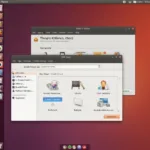An OBD2 interface, also known as an OBD2 scanner or diagnostic tool, is the key to unlocking your car’s hidden data. It’s a crucial tool for anyone from car enthusiasts to professional mechanics, allowing you to diagnose issues, monitor performance, and understand your vehicle better. This article will delve into the intricacies of the OBD2 interface, exploring its functionality, benefits, and various types available on the market.
What is an OBD2 Interface?
OBD2 stands for On-Board Diagnostics, Generation Two. It’s a standardized system that allows external devices to access the diagnostic data within a vehicle’s computer. The OBD2 interface is the physical port, typically located under the dashboard on the driver’s side, where you connect the diagnostic tool. This interface acts as the communication gateway between your car’s computer and the external world.
How Does an OBD2 Interface Work?
The OBD2 interface transmits data using a standardized protocol. When you connect a diagnostic tool, it communicates with the vehicle’s various control units (ECUs), retrieving information about engine performance, emissions, transmission, and other systems. This data can then be displayed on the scanner’s screen, providing valuable insights into the vehicle’s health and performance.
Types of OBD2 Interfaces
There are several types of OBD2 interfaces available, each catering to different needs and budgets. These range from basic code readers to advanced professional scan tools.
- Basic Code Readers: These entry-level devices are primarily designed to read and clear diagnostic trouble codes (DTCs). They are affordable and easy to use, making them suitable for car owners who want to perform basic diagnostics.
- Bluetooth/Wi-Fi OBD2 Adapters: These wireless adapters connect to your smartphone or tablet via Bluetooth or Wi-Fi, allowing you to use diagnostic apps on your mobile device. They offer greater flexibility and often come with additional features, such as data logging and real-time performance monitoring.
- Professional Scan Tools: These high-end devices offer comprehensive diagnostic capabilities, including advanced functionalities like live data streaming, bi-directional control, and access to manufacturer-specific codes. They are typically used by professional mechanics and automotive technicians.
Benefits of Using an OBD2 Interface
Using an OBD2 interface offers a myriad of benefits, empowering car owners and professionals alike.
- Early Problem Detection: By regularly scanning your vehicle, you can identify potential issues early on, preventing costly repairs down the line.
- Improved Fuel Efficiency: Monitoring fuel consumption data can help you identify driving habits that are negatively impacting your mileage.
- Enhanced Performance Monitoring: Track various performance parameters, such as engine speed, temperature, and throttle position, to gain a better understanding of your car’s behavior.
- Cost Savings: By diagnosing problems yourself, you can save money on diagnostic fees at repair shops.
Choosing the Right OBD2 Interface
Selecting the right interfata diagnoza obd2 depends on your specific needs and technical expertise. Consider factors such as your budget, the features you require, and the level of diagnostic detail you’re looking for.
What are the common problems diagnosed with an OBD2 interface?
Common problems diagnosed with an OBD2 interface include misfires, oxygen sensor issues, catalytic converter problems, and evaporative emission system leaks.
How do I choose the right OBD2 interface for my car?
Choosing the right OBD2 interface depends on your needs and budget. Consider whether you need a basic code reader or a more advanced scan tool with live data streaming and other features.
Conclusion
The OBD2 interface is an indispensable tool for anyone who wants to understand and maintain their vehicle. From basic code readers to professional scan tools, there’s an OBD2 interface to suit every need and budget. By leveraging the power of OBD2, you can empower yourself to take control of your car’s maintenance, diagnose problems effectively, and enjoy a smoother, more informed driving experience.
FAQ
- What is the difference between OBD and OBD2?
- Where can I find the OBD2 port in my car?
- Are all OBD2 interfaces compatible with all cars?
- What does a check engine light mean?
- Can I clear trouble codes with an OBD2 interface?
- How often should I use an OBD2 interface?
- What are some common OBD2 trouble codes?
Need help with OBD2 interfaces or have any car diagnostic questions? Contact our 24/7 support team via WhatsApp: +1(641)206-8880 or Email: [email protected]. We’re here to assist you.


